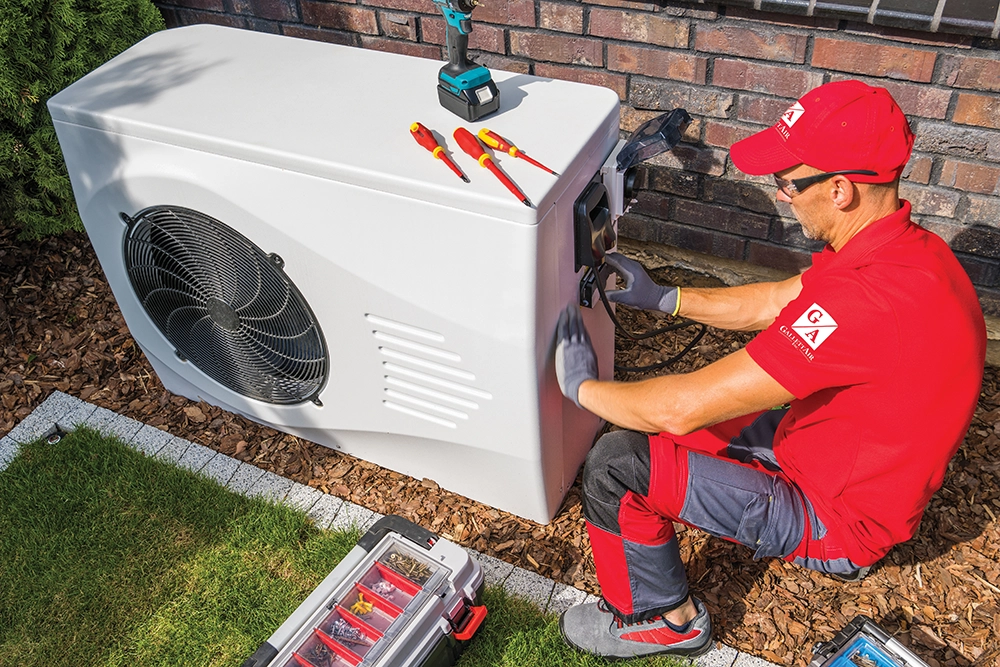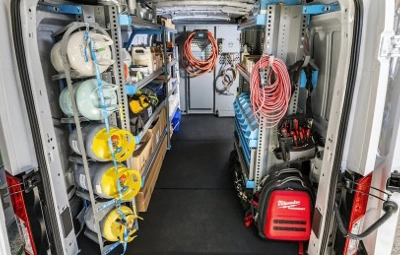We sat down with Jim Cika of The International Code Council to help educate the HVAC industry on all the AIM ACT phase-down changes happening now, and one big change coming in 2025.
What are the changes taking effect in 2024?
This is a historic time because the second phase of the EPA's program phase-down is taking effect.
It's about the production and consumption of the HFC refrigerants which is impacting the residential and light commercial HVAC markets only. It's not affecting large commercial companies currently. That will come.
As we all know, the first phase-down went into effect on January 1, 2022. At that time the EPA imposed a 10% reduction on HFC refrigerants. The AIM Act directs the EPA to phase down the production and consumption of HFCs to 15% of their baseline levels in a tiered manner by 2036 through an allowance allocation and trading program. The AIM Act outlines a 15-year phasedown schedule to reduce the production and consumption of HFCs by 85% on a weighted global warming potential (GWP) basis.
In so doing, we are anticipating a big price increase on the HFC refrigerants, and the availability may come to a crawl in some locations.
For those who have equipment that uses the HFCs, will they still be able to find it?
It will be harder to find, and it will be expensive. People may think that there are other refrigerants out there they can use. Unfortunately, the EPA has its SNAP program (Significant New Alternatives Policy) and they've listed the refrigerants to be used as substitutes for HFCs. For this equipment – for HVAC for residents and light commercial – it’s the A2Ls only.
That is what is driving this transition. It must happen.
Are there any workarounds to avoid higher prices or any possibilities of exemption?
No, unfortunately with the EPA regulations, it's mandatory. We need to reduce those levels to help the environment. We eliminated the chlorofluorocarbons in refrigerants which helped to eliminate the ozone hole. But in terms of global warming potential, the HFCs are high global warming potential refrigerants. That is why this phase-down is underway.
Also, there is another wrench to throw into the mix, and that's the building codes. The problem for folks, and it will be an issue, is that the 2020 building codes as well as earlier iterations, don't allow A2L refrigerants to be used for human comfort use – residential heating/air and light commercial.
The 2024 codes have been finalized. They address the A2Ls and allow for these applications, but it's up to all the local jurisdictions to get to that level of code coverage. That's where The International Code Council (ICC)* as well as other partners have been integral in trying to work together to raise awareness to get changes made in local regulations.
We hope to eliminate any hurdles or problems associated with that or at least bridge the gap to information.
What should company owners do to prepare?
The first thing I would recommend to anybody, be it the business owner or customers, is to reach out to their local building officials and find out exactly what steps to take to address these refrigerants.
Each jurisdiction has the authority to handle the transition the way they deem appropriate for the safety of their residents. Some jurisdictions have launched legislation to stop these actions, and others like Georgia have added amendment codes. So, there is a lot to unpack.
Other than the EPA, is there a central hub where owners can reference all the updates and resources?
At the ICC we've developed a hot topics website where you can find everything including the latest updates. We’ve put resources on our website that outline the changes in the code – labeling requirements, ventilation requirements – things that need to be addressed, leak detection and alarm systems, etcetera. Also, we have partnered with AHRI who are launching a page dedicated to AIM as well. So, as of this month, the ICC and AHRI, have dedicated pages with all the information. I've been working with them and some other industry partners to develop dedicated industry sites for all contractors.
There will be two sites, one focused on codes and one focused on all the training and resources, including the equipment information, information about the refrigerants, and more. The plan is to interlink – we’re working on that now.
Talk about the pros and cons of A2Ls.
The A2Ls are very similar to the HFCs in performance. So, the owners of the equipment aren't going to see much change as far as performance. I've heard anecdotally that in some cases the A2L is a more efficient refrigerant. So long term, that would be a lower cost. That is a pro. But the main pro is that these new refrigerants do less damage to the environment. Again, that is what drove this – the ability to lower global warming potential.
The cons – A2L is slightly flammable which is driving labeling requirements. And it’s more expensive in the short term.
What do we know about penalties, inspections, and potential issues if noncompliant?
Going back to an earlier comment, contractors need to get educated on how to approach the building officials in the local jurisdictions who can set penalties wherever they like.
The fines will vary based on jurisdiction. It’s up to owners to get acquainted with the fines for code violations from their building officials. In certain areas, if something is changed without a permit, some jurisdictions will make the contractor remove the equipment, and start over. You can imagine the cost of doing that is going to be high. But again, the jurisdictions have the authority to handle that as they deem fit for the areas that they cover. Back to the CFCs and HCFs – those were phased out, and illegal now completely. Once these are produced and, in the market, they can stay there as long as it doesn't leak into the atmosphere.
What is the best way to explain changes to customers?
It'll probably be a while before people want to change out their HFC equipment because it hasn't been in the market that long. It's relatively new from the standpoint of refrigerants.
It's already getting expensive for the service contractors to get it and it's going to make it exponentially higher for the customers to get it. You can keep your equipment as long as you want. The EPA is not saying you must replace your equipment. Unfortunately, a lot of these HFC systems are young, so they can be out there for another 20 years or so. The main thing we need to stress is that the 2021 codes and earlier don't even allow these A2Ls to be used. It is vital to reach out to the local building officials if they have concerns. Lastly, there are storage changes because the A2Ls are flammable, so contractors need to be aware of that as well.
With flammables there are storage implications for dealers and contractors – not so much on their trucks when they're going out to a site, but if they're storing refrigerants in a building. There are limitations on the equipment that can be in the room. For instance, you can't have a boiler in there that's going to have a hot surface temperature near the product. There are also requirements for ventilated shafts for refrigerant piping in light commercial.
Who's watching? Are inspectors going to come randomly inspect a warehouse?
Well, you are hinting at what's coming for next year. The EPA just added another rule at the end of October. Regarding inventory levels – this will impact the contractors, dealers, and distributors. It greatly affects the PTAC and window units. Regarding self-contained systems that go out the door ready to plug in and use. You cannot manufacture those after January 1, 2025. You can't import, manufacture, or distribute them. They're done. They can't have HFCs. This is important. This just came out – published in the Federal Register on October 26th.
It will have a major impact if you're servicing hotels but also on split systems as well. Again, this is not for residential, only light commercial – but you cannot install a new system that operates on HFCS.
After January 1, 2025, you can repair any equipment you have, if you need to replace the condensing unit, but you cannot install a new self-contained HVAC system in a building after January 1, 2025. It is a very important change and it kind of happened very quickly.
That is certainly one that your readers may not know. It just happened!
More can be found on AL2 refrigerants here https://www.iccsafe.org/products-and-services/i-codes/a2l-refrigerants-transition/
Jim Cika is director, PMG technical resources for the International Code Council, where he serves as a subject matter expert to the plumbing, mechanical, fuel gas and swimming pool & spa codes. He represents the Code Council in federal and state coalitions, task forces, committees, and councils where expertise in PMG technical matters is required. Cika has a degree in Mechanical Engineering from the Georgia Institute of Technology and started his career as an HVAC design consultant. In addition, he has over 20 years of experience as a chief engineer responsible for regulatory, product standards, building code and product engineering matters for manufacturers of water heating and space heating appliances.






